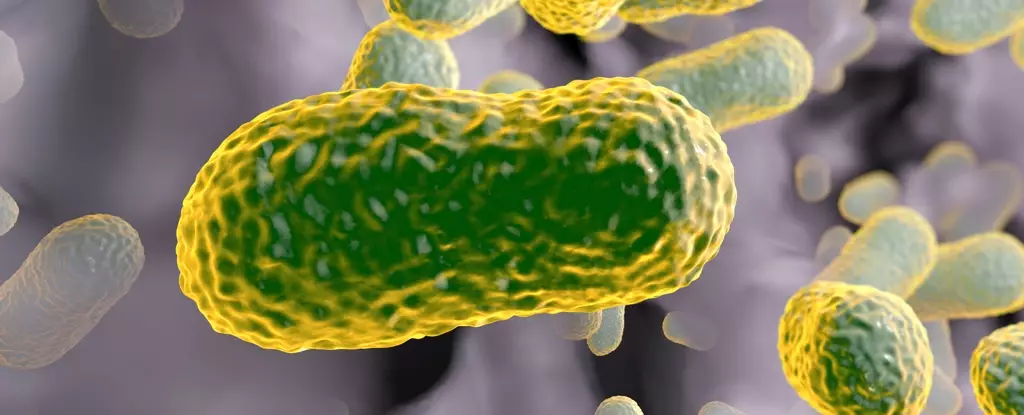The story of antibiotics is a fascinating saga of breakthroughs, occasional setbacks, and renewed hope as new research emerges. Originally celebrated for their effectiveness, antibiotics transformed medicine since their inception, famously aiding in the fight against bacterial infections. However, as bacteria have evolved and developed resistance, the once-reliable arsenal of antibiotics is increasingly rendered ineffective. An alarming resurgence of drug-resistant infections has highlighted the urgent need for novel solutions, particularly given that nearly half of today’s antibiotics are derived from compounds discovered over eighty years ago during a period commonly referred to as the ‘golden age’ of antibiotic discovery.
Despite the monumental contributions of these early antibiotics, many potential candidates have been forgotten due to factors such as toxicity and ineffectiveness against specific bacterial strains. One such example is streptothricin, an antibiotic discovered in the 1940s that exhibited promise against gram-negative bacteria. This class of bacteria, which excludes robust protective cell walls, has proven particularly menacing due to its resistance to many existing antibiotics. The re-examination of long-abandoned antibiotics, like streptothricin, holds significant potential in the face of burgeoning drug-resistance challenges.
Recent research led by pathologist James Kirby from Harvard University shines a new light on the old antibiotic, now referred to as nourseothricin. Kirby and his colleagues are pioneering investigations into its applicability in contemporary medicine, driven by the urgent need for new therapeutic options against bacterial strains that defy current treatment options. The World Health Organization (WHO) has identified a list of critical drug-resistant pathogens, primarily composed of gram-negative bacteria and unfortunately, streptothricin did not feature on any therapeutic lists due to concerns about its toxicity to human kidneys.
However, as Kirby has pointed out, the challenge posed by multi-drug resistant pathogens necessitates a reevaluation of previously discarded resources. Their focus on nourseothricin has yielded promising findings. Notably, research indicates that one particular component of nourseothricin, known as streptothricin F (S-F), demonstrates the ability to eradicate strains of gram-negative bacteria without inflicting harm on kidney cells, marking a significant breakthrough.
Mechanisms of Action: Understanding the Attack
The underlying mechanisms by which streptothricin acts against these resilient bacterial adversaries are not yet fully understood. However, preliminary studies suggest that streptothricin operates by disrupting the protein synthesis machinery within gram-negative bacterial cells. This novel approach offers a refreshing pathway, differing from existing antibiotic strategies which largely target cell walls or specific metabolic processes.
If researchers successfully decode the precise actions of streptothricin, the benefits could extend beyond merely reviving a historical medicine; it may pave the way for the development of an entirely new class of antibiotics tailored for resistant strains. Kirby’s team is already exploring methods to enhance the efficacy of natural streptothricin compounds, showcasing the potential for long-forgotten antibiotics to reclaim their positions in modern medical practice.
Interestingly, the origins of streptothricin reveal the bounty of nature in the fight against drug resistance. Isolated from soil bacteria, these antibiotics are an exemplar of how natural ecosystems harbor solutions waiting to be discovered. The evolutionary processes these bacteria undergo—developing defensive mechanisms and strategies to compete with other microorganisms—serve as a reminder of the intricate relationship between the environment and public health.
In an era where bacterial resistance poses significant risks, the synthesis of knowledge from different scientific disciplines fosters collaboration and innovation. As researchers like Kirby delve into the microbial world for solutions, the interdisciplinary approach of combining microbiology, pharmacology, and environmental studies stands poised to unlock new opportunities in the challenge against superbugs.
Ultimately, the resurgence of interest in antibiotics like nourseothricin provides both hope and a clearer path forward in combating the looming threat of drug-resistant bacteria. This renewed focus on previously dismissed compounds suggests that the scientific community is beginning to understand the significance of revisiting historical research through a contemporary lens. As efforts continue, both in the laboratory and in the field, the dawn of new therapeutic agents may be on the horizon, promising more effective treatments for the infections of tomorrow. The challenge lies not just in uncovering these treatments, but also in ensuring their responsible use to maintain their efficacy for future generations.


Leave a Reply